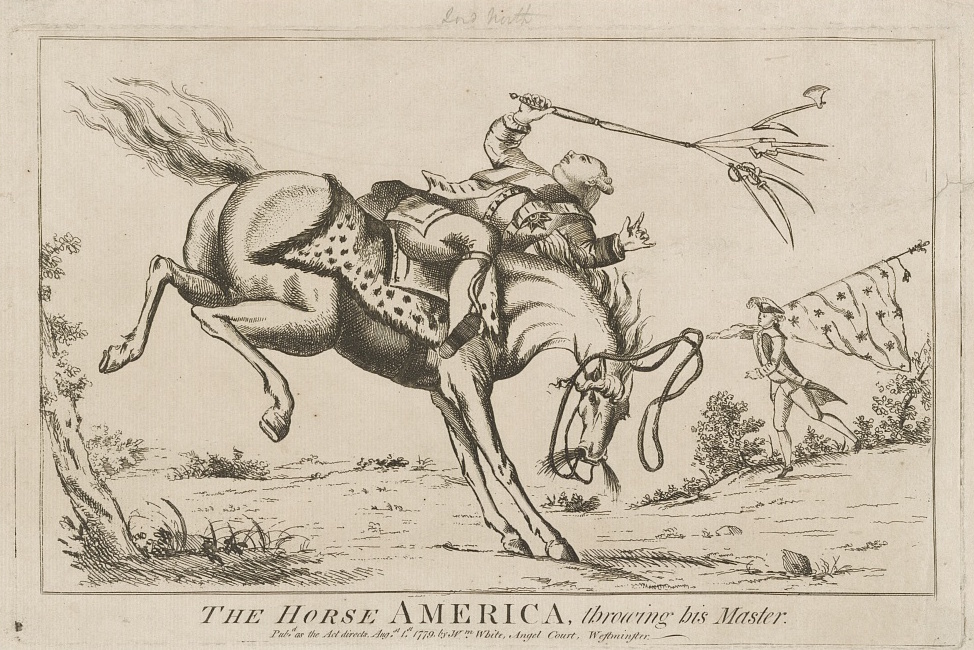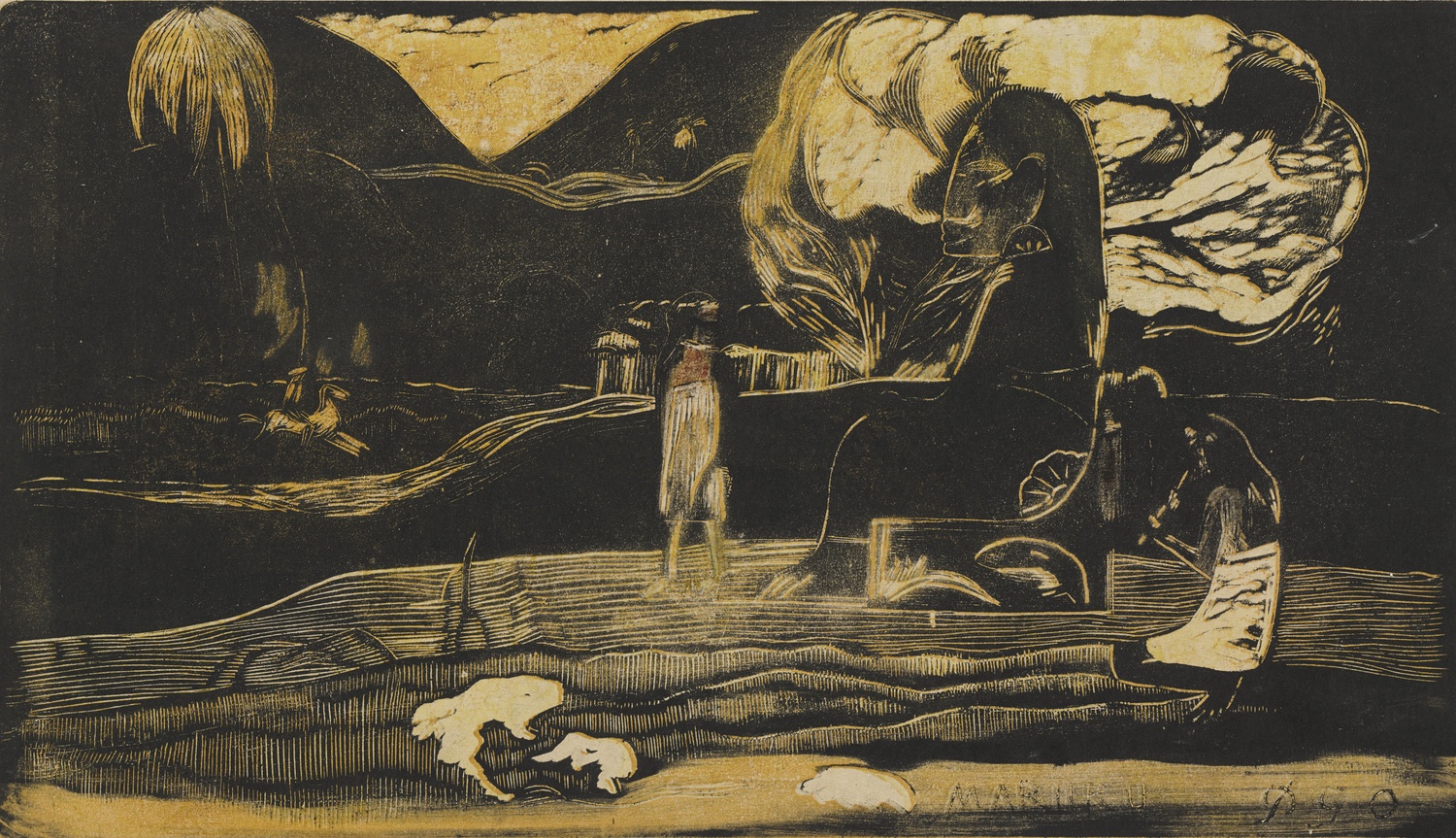June 2017

"The Horse America, Throwing Its Master," a British political cartoon from 1779. Library of Congress, Washington.
American Democracy: A Great Leap of Faith
Smithsonian National Museum of American History, Washington
Opens June 28
All men are created equal: can you imagine it?! After 5000 years of us and them, a bunch of colonists steeped in European liberal philosophy got together in Philadelphia, and the declaration they drafted there was much more than a breakup letter. The Americans didn’t just plump for independence; for them, the metaphysical grounding of democracy was “self- evident,” built into the logic of the universe. (Those Americans, by the way, weren’t just intellectuals; as the historian Holger Hoock writes in his outstanding new book Scars of Independence, the American Revolution was a civil war of its own, hardly less bloody than those of France and Haiti.) American democracy was not a full reality in 1776; the declaration’s self-evident truth did not stretch to women, to “the merciless Indian Savages,” or to the slaves owned by more than a few of its drafters. The ideals of the revolution, though, weren’t invalid just because they weren’t fully realized. Ideals are what make you work, after all. To build a nation of the people, by the people, for the people, you first have to believe that it’s necessary to try.
Lately we feel conflicted singing the virtues of America — but if you think we have it bad, try working for the federal government. It can’t be fun nowadays to be a curator at the Smithsonian, tasked with interpreting this country’s history when the very sturdiness of facts has come under attack a few doors down the National Mall. The museum has spent years preparing a massive new wing devoted to the invention and expansion of American democracy, which was supposed to open last summer; the delay has upped its stakes, and given its lessons from the past the cast of a present-day crusade. Expect relics, as befitting a national museum, among them the desk on which Thomas Jefferson drafted those lines about equality’s self-evidence. But democracy, as this show’s subtitle suggests, is a credence as much as an activity — and amid the ballot boxes and protest placards, the Smithsonian’s show also investigates the philosophy of citizenship as understood by colonists, immigrants, radicals, and populists. Who are “the people,” anyway, and how can you know? In a new nation, conceived in liberty, that question never goes away.
“Democracy works, America,” said Barack Obama a year ago, “but we’ve gotta want it — not just during an election year, but all the days in between.” We learned that the hard way on November 8, but here is an unexpected upside: Obama’s successor is so wildly outside the norms of democratic process that even the echt-establishment Smithsonian now appears as a site of defiance, while its tame rhetoric about “citizenship in a pluralistic society” comes across now a rallying cry. Maybe “American Democracy” will make us all heartsick; maybe, looking at Lincoln’s inkstand and Susan B. Anthony’s shawl, we will recoil to know that all this was leading to a presidency that betrays every principle of 1776. Or maybe — if we can still muster some Obamaesque optimism — the show will remind us of the civic work needed, every day, to accomplish the pursuit of happiness.

Yan Xing
Kunsthalle Basel
Opens June 2
Ahead of the art fair, this young Chinese artist known for his elaborate, sometimes camp installations gets going in the city on the Rhine. Yan, born in 1986 and now based between Los Angeles and Beijing, makes not only exhibitions but also strange, rumor-filled narratives that ripple through them; for this show, he’s allowed his own art to be rethought by a curator who just happens to be fictional.
Ways of Seeing
ARTER, Istanbul
Opens June 2
A tribute to the late John Berger, this group show includes both foreigners (Cindy Sherman, Walid Raad, Fred Sandback, James Turrell) and Turks, some of whom have chosen — or been forced — to remain anonymous. Interspersed historical and contemporary paintings, photographs, sculptures, and videos serve up optical illusion with a heavy dose of self-examination. At stake is how we cleave what we see from what we know, and how to recognize individual perspective as a political act.
Münster Sculpture Project
Münster, Germany
Opens June 10
The bicycle capital of Germany is again hosting its once-a-decade festival of sculptures, now extended to the neighboring town Marl. 35 artists, including a few less familiar names (like the Lagos-based sound artist Emeka Ogboh, also participating in Documenta down the road) have made site-specific pieces, scattered throughout the city. Borrow a bike and discover not just new works by Pierre Huyghe and Hito Steyerl, but also enduring sculptural works from 10, 20, 30, and 40 years ago.
Portraits by Cézanne
Musée d'Orsay, Paris
Opens June 13
John Elderfield, MoMA’s former painting supremo, is organizing the first show ever devoted to the portraits of “the father of us all” — stiffer and trickier than the still lifes and landscapes from which 20th-century painting sprung. With five dozen examples, including many of his stern wife Hortense, the show should clarify how Cézanne’s style developed and how likeness became an only incidental attainment.

Kara Walker
DESTE Foundation, Hydra, Greece
Opens June 20
The island that prefers donkeys to cars hosts Walker’s first public project since the colossal sugar sphinx that defined the New York summer of 2014. The sphinx has since been dismantled, but its left hand (with its fingers suggestively reconfigured) will make its way from Brooklyn sugar factory to Greek slaughterhouse. If you're headed to Athens for Documenta, this is just a quick ferry away.
In Search of Expo ’67
Musée d’art contemporain de Montréal
Opens June 21
The epochal World’s Fair, which drew 50 million people to a new island in the Saint Lawrence River, is being rebooted by many of Montreal’s museums for
its golden jubilee. At MCAM, new works by Duane Linklater, Althea Thauberger and other artists join recreations of such groovy ’67 relics as the Kaleidoscope, a pavilion that functioned as a walk-in, flashing color wheel.
Frank Bowling
Haus der Kunst, Munich
Opens June 23
Born in then-colonial Guyana in 1934, Bowling had some hits in 60s London, then came to New York and became a well-regarded critic. If there’s a certain datedness to his saturated, splotchy abstractions — often done by pouring paint right on the canvas — his Mappa Mundi series, which place geographical features in fields of effervescent color, are as engaging as ever.
Gauguin: Artist as Alchemist
Art Institute of Chicago
Opens June 25
The louche artist came late to his craft (after a busted career as a financial trader) but somehow thrived in his inexperience, turning a fascination with the exotic into his troubling but indelible paintings of Tahitian women. Gaugin’s other flights of fancy — including experiments in ceramics and woodcuts — are seen less but equally significant; 240 of these works form this new show, which travels to Grand Palais next.